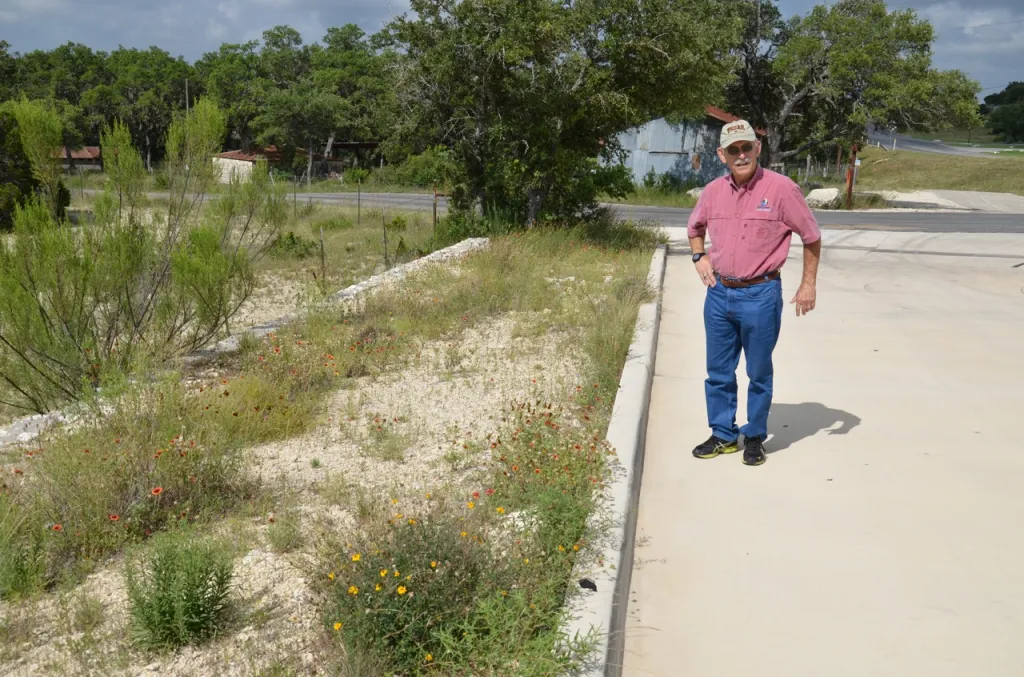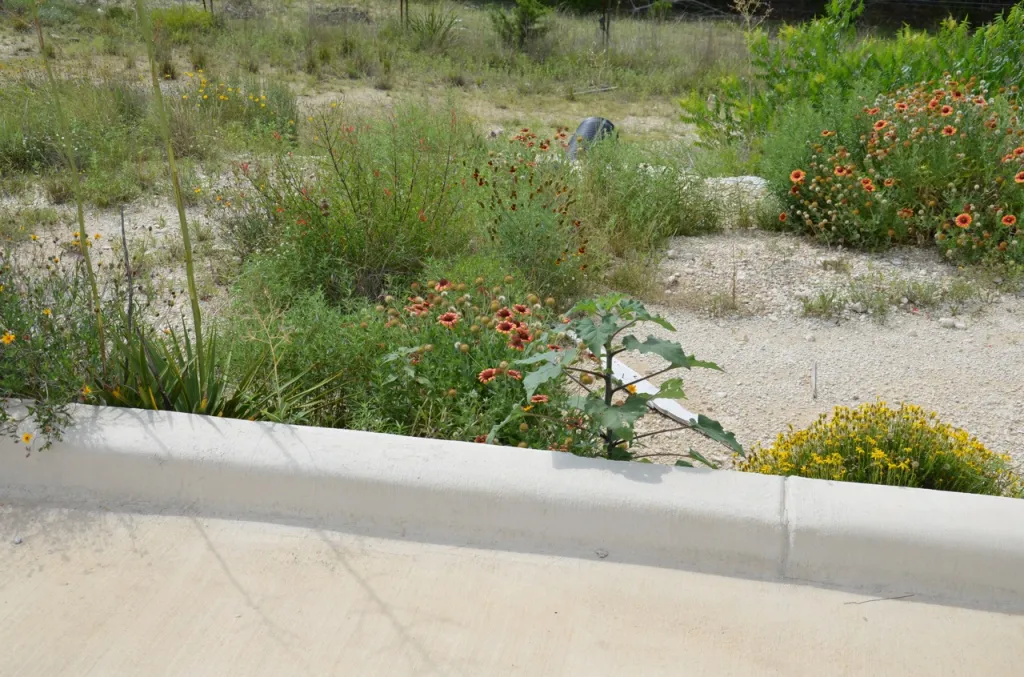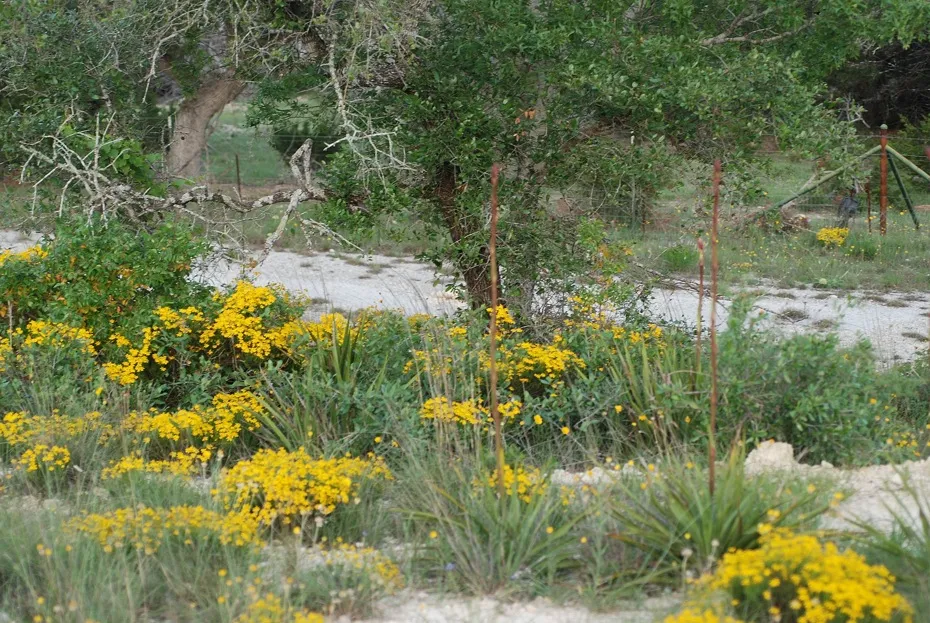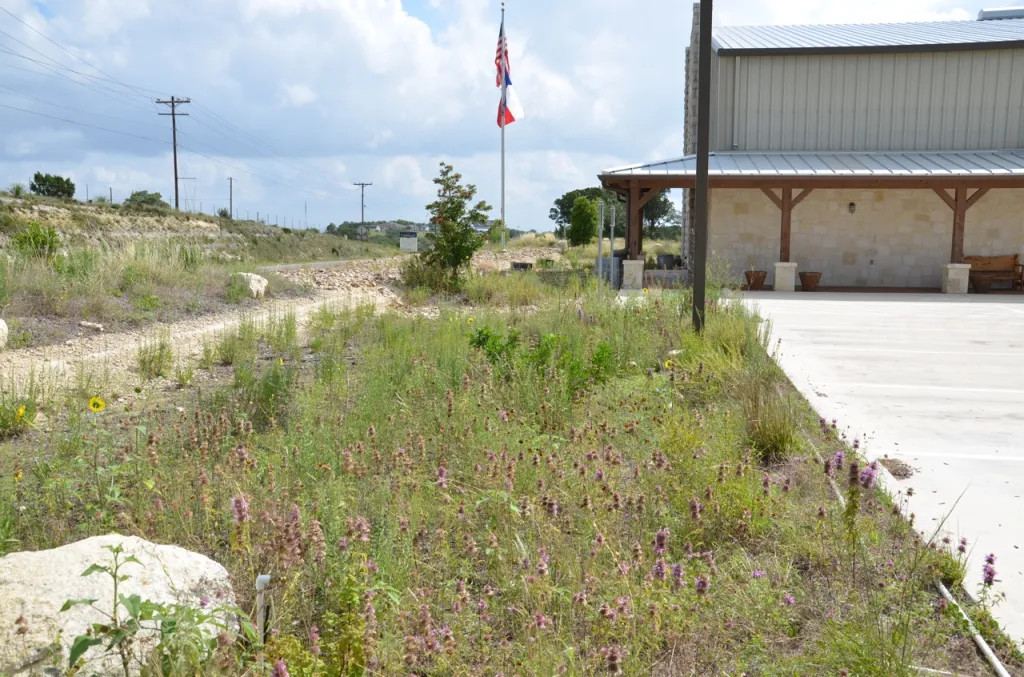By Delmar Cain
OK, you have the land and the structure on a high, rock and caliche site. Now what do you do for low–maintenance landscaping in our sometimes rain/sometimes drought Hill Country. That is the problem that many have and that many will have to face if our area continues to grow consistent with current projections.

The Bergheim Volunteer Fire Department found one ecologically sound solution with the help of some of its board and members, who also just happened to be members of the Boerne Chapter of the Native Plant Society. Wilt Shaw, J. W. Pieper, and Dave Kibler along with other volunteers provided an inexpensive and nature-friendly method to help complete the fire station site.
By 2004 citizens in the eastern part Kendall County saw the need for a fire station in the area. After incorporating as a non-profit corporation and with the continuing help of Kendall County Precinct 2 Commissioner, Gene Miertschin, the group began constructing a fire station in Bergheim in 2007 on a site on SH 46 deeded to them from Kendall County.
By 2008, while construction was still underway, J. W. Pieper and Wilt Shaw started thinking about using native, drought resistant plants for landscaping and began discussing it with the board. It was a good idea because the site is not one that would naturally support ordinary wholesale-grown nursery plants. It is near the top of a hill, has little or no topsoil on the caliche, and has small and sparsely located trees.

The board agreed with the idea, especially after Wilt was successful in obtaining funding from the Boerne Chapter of NPSOT for the purchase of native plants and seeds. The Chapter was receptive to the idea of supporting another demonstration garden in addition to the one at the Cibolo Nature Center.
Wilt consulted with a professional native plant landscaper about a layout. The east and west sides of the building got boosts with topsoil and mulch purchased by the fire department. The front got a smaller amount of topsoil and a layer of river rock. To help out with drainage on two trees in the building front, the contractor put in a French drain. Caliche from the leveled building site was dumped and then sloped on the southwestern side of the parking lot. The back or south side of the site and the east side of the site beyond the driveways were not disturbed. There were also places reserved for memorial trees, a big toothed maple, a fall elm and a Monterrey oak, for those who wanted to plant a tree honoring lost loved ones.
Then Wilt ran into a problem that many others have had to face. Some of the recommended plants on the plan were nowhere to be found in the local nurseries. Most nurseries get their plants from wholesale growers who grow what they decide is easily grown and easily sold—in other words commercially successful. By making the decision about what they want to grow, the wholesale growers make the decisions about what is available to buy.

Wilt began to deviate from the landscape plan when planting began in 2009. Working with Betty Dunn, who finds most of the plants for Boerne NPSOT for the Mostly Native Plant Sale each spring, Wilt traveled to Austin, Medina, Kerrville and Bulverde to purchase plants that he knew about and could find at smaller nurseries that grew their own plants. Wilt also purchased the prairie and the butterfly seed mixes from Native American Seed in Junction.
With lots of help from volunteers the planting was completed in 2010. Volunteers from surrounding communities serviced by the fire department also helped with watering to initially establish the plants. But by 2011 when the severe drought hit all of Texas the plants were established and were watered only occasionally. And the payoff was that 90% of the plants survived even in the extreme drought. This year he has watered only once and will probably not water again until September. That is the kind of water dividend that all of Texas needs to be considering if future growth will be accommodated.

The landscaping plants include a variety of native perennials, native grasses, native annuals, native shrubs, native trees and many desirable volunteers. There are enough wildflowers and milkweeds to qualify for a Butterfly Way Station certification under the Monarch Watch program. Other plants attract a variety of other butterflies.
Some landowners may prefer a more sculptured or manicured look for their garden. That can always be accomplished with time or money. But one goal of each private, business or public landowner, regardless of whether a manicured or more natural look is chosen, should be to use less water outside to accommodate more inside. The community volunteers who have done the landscaping at the Bergheim Volunteer Fire Department station have shown us how it can be done on a difficult site. The next time you go that way stop by and take a look.
A plant list for the Bergheim Volunteer Fire Station can be found on the Boerne NPSOT website at: http://www.npsot.org/wp/boerne/.


